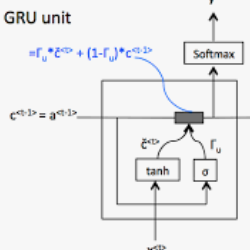LSTMs and GRUs are the most common recurrent neural network architectures used to solve temporal sequence problems. The two architectures have differing data flows dealing with a common component called the cell state also referred to as the memory. We attempt to enhance the memory by presenting a biologically inspired modification that we call the Mother Compact Recurrent Memory MCRM. MCRMs are a type of a nested LSTM-GRU architecture where the cell state is the GRU's hidden state. The relationship between the womb and the fetus is analogous to the relationship between the LSTM and GRU inside MCRM in that the fetus is connected to its womb through the umbilical cord. The umbilical cord consists of two arteries and one vein. The two arteries are considered as an input to the fetus which is analogous to the concatenation of the forget gate and input gate from the LSTM. The vein is the output from the fetus which plays the role of the hidden state of the GRU. Because MCRMs has this type of nesting, MCRMs have a compact memory pattern consisting of neurons that act explicitly in both long-term and short-term fashions. For some specific tasks, empirical results show that MCRMs outperform previously used architectures.
翻译:LSTMS和GRUs是用来解决时间序列问题的最常见的常见经常性神经网络结构。 这两种结构有不同的数据流, 涉及一个共同组成部分, 称为细胞状态( 也称为记忆) 。 我们试图通过提出一种生物学启发的修改来增强记忆, 我们称之为母亲契约经常记忆 MCRM。 MCRMS是一种嵌套的LSTM- GRU结构, 细胞状态是 GRU 隐藏状态。 子宫和胎儿之间的关系类似于 MCRM 体内的LSTM和GRU之间的关系。 胎儿通过双胞胎带连接到它的子宫。 双胞胎带由两条动脉和一条血管组成。 这两种动脉被认为是对胎儿的一种输入, 这与LSTM 的遗忘门和输入门的组合类似。 血管是胎儿的输出, 它的作用是GRU的隐藏状态。 因为 MCRMS有这种类型的巢穴, MCRMMS 具有一种紧凑缩的记忆模式, 包括了以前使用的神经模型, 。





